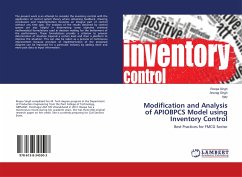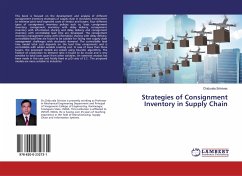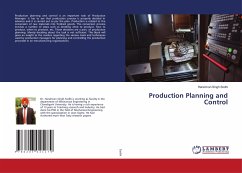Inventory management has great impact on the overall performance and profitability of an enterprise. The trade-off is between high holding and obsolescence costs of excessive stock on one hand and poor customer service and high shortage costs resulting from low inventory levels on the other. The desired solution is devising a suitable inventory control policy that provides a satisfactory customer service level without keeping unnecessarily large inventories that blocks capital and is difficult to handle. The study compares various quantitative forecasting models for forecasting continuous and highly fluctuating real demand data of a valve manufacturing industry to be used in the inventory systems. The case study focuses on inventory control in a system having high demand variability over a versatile range of products taking into account the fact that inventory control parameters are a function of forecasting systems.
Bitte wählen Sie Ihr Anliegen aus.
Rechnungen
Retourenschein anfordern
Bestellstatus
Storno








